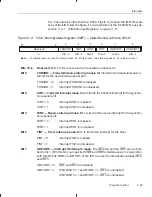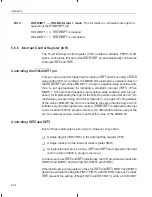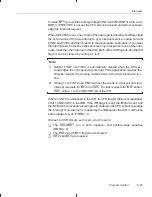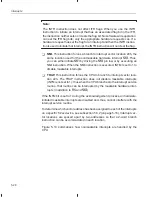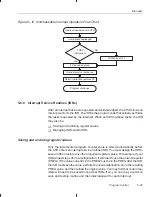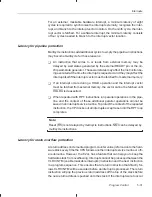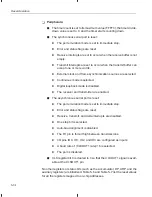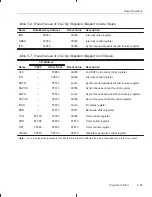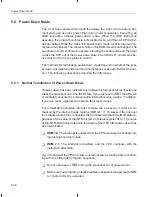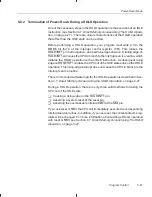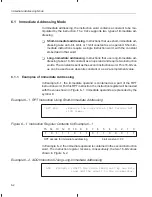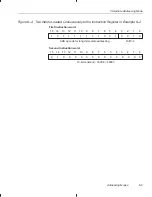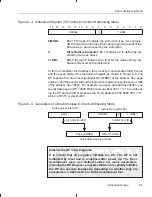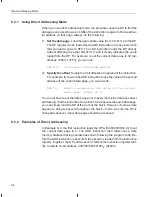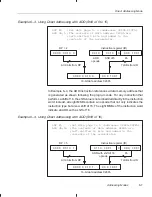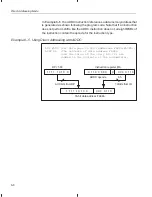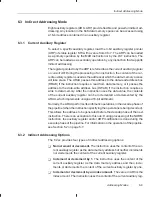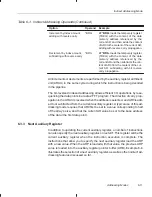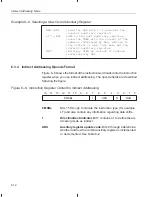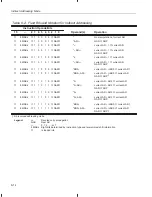
Power-Down Mode
5-37
Program Control
5.8.2
Termination of Power-Down During a HOLD Operation
One of the necessary steps in the HOLD operation is the execution of an IDLE
instruction (see Section 4.7,
Direct Memory Access Using The HOLD Opera-
tion, on page 4-27) . There are unique characteristics of the HOLD operation
that affect how the IDLE state can be exited.
Before performing a HOLD operation, your program must write a 0 to the
MODE bit (bit 4 of the interrupt control register, ICR). This makes the
HOLD/INT1 pin both negative- and positive-edge sensitive. A
falling edge on
HOLD/INT1 will cause the CPU to branch to the interrupt service routine, which
initiates the HOLD operation with an IDLE instruction. A subsequent
rising
edge on HOLD/INT1 can take the CPU out of the IDLE state and end the HOLD
operation. This rising-edge interrupt does
not cause the CPU to branch to the
interrupt service routine.
The recommended software logic for the HOLD operation is described in Sec-
tion 4.7,
Direct Memory Access Using the HOLD Operation, on page 4-27.
During a HOLD operation, there are only three valid methods for taking the
CPU out of the IDLE state:
-
Causing a rising edge on the HOLD/INT1 pin.
-
Asserting a system reset at the reset pin.
-
Asserting the nonmaskable interrupt NMI at the NMI pin.
If you use reset or NMI, the CPU will immediately execute the corresponding
interrupt service routine. In addition, if you use reset, the contents of some reg-
isters will be changed. For more information about exiting a HOLD operation
with reset or NMI, see Section 4.7,
Direct Memory Access Using The HOLD
Operation, on page 4-27.

